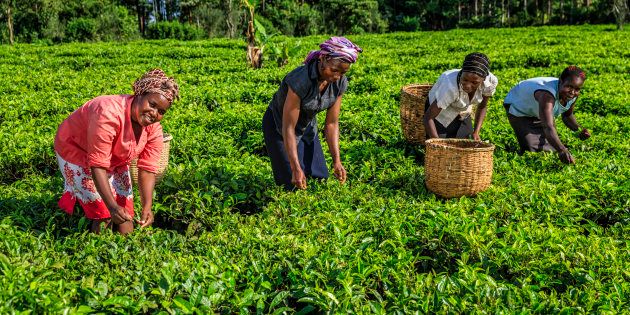
Strategic interventions should be informed by facts if they are to be effective in addressing societal challenges.
This is also true about the gender debate in the agricultural sector. Many researchers (myself included) have been arguing that women should get more support if we are to boost Africa's crop production, because of the role that female farmers play in crop production.
This argument is typically premised on the Food and Agricultural Organisation (FAO) documents that suggest that 80 percent of Africa's agricultural production comes from small farmers, who are mostly rural women. Concurring with this notion is the World Farmers Organisation, which argues that "women comprise the largest percentage of the workforce in the African agricultural sector, but do not have access and control over all land and productive resources".
Against this backdrop, the World Bank released a book last month that questions much of the data and a number of statements about Africa's agricultural sector. The book is entitled "Agriculture in Africa: Telling Myths from Facts". It covers a wide range of topics, from smallholder land access, post-harvest losses and financing of agricultural inputs, to agricultural labour productivity and women's work in agriculture, among others.
Having recently written an article on women's contribution to the agricultural sector, I was quickly drawn in on the chapter that dealt with the subject. The first thing that stood out was the notion that the figure often cited –– namely, that roughly 80 percent of agricultural labour input in Africa is by women –– is flawed.
The book puts women's share of labour in crop production at an average 40 percent, with variations across countries. Worth noting, however, is that the data does not cover the entire continent, but selected countries, namely: Ethiopia, Malawi, Niger, Nigeria, Tanzania and Uganda. With that said, the countries cover a wide array of the continent's farming zones.
Across the aforementioned countries, the highest contribution by women to agricultural labour is 56 percent in Uganda, followed by 52 percent in both Tanzania and Malawi, with the lowest being 24 percent in Niger. Although there's room for error in these survey results, the data is nonetheless illuminating and poses bigger questions about the support systems and strategies that are intended to increase Africa's food supply.
Youth involvement in food production could be key for long-term sustainability.
Should support systems be focused on women empowerment, or include anyone who produces food for the continent? In order to promote greater production, we need to focus on tapping into the biggest source of underutilised human capital –– which at this stage is the unemployed youth.
Overall, the key takeaway from the World Bank's book is that strategic interventions need to be backed by solid research, because incorrect assumptions could have long-term implications for society. In the case of agricultural development, men would find themselves at the lower end of support systems because of the commonly held view that women are the key drivers of the continent's agricultural production.
In light of this new data, the focus should rather be on calibrating more inclusive policies and prioritising youth involvement. In countries such as South Africa, farmers are ageing –– with the average age estimated at 62. Therefore, youth involvement in food production could be key for long-term sustainability.
While on the subject of unemployed youth, there is another commonly held view that young people show little interest in the agricultural sector -- preferring sophisticated office jobs. At face value, this notion is believable, but there is limited evidence to support the claim.
Anecdotally, I have met a number of young South Africans who are motivated and interested in joining the agricultural sector.
All ask the same questions: Where do we start? Is it possible to access productive land and some mentorship? How do I access potential funding and financing? Therefore, the ideas that young people are not interested in agriculture is questionable.
I am digressing; back to the book. Although women empowerment should remain important, my take on the book's findings would be that development policies or strategies in the food and agricultural sector should be inclusive. The youth should be a priority, as we are a young continent with ageing farmers.
* This blog post is an extract from my Business Day column, published on October 26, 2017.
